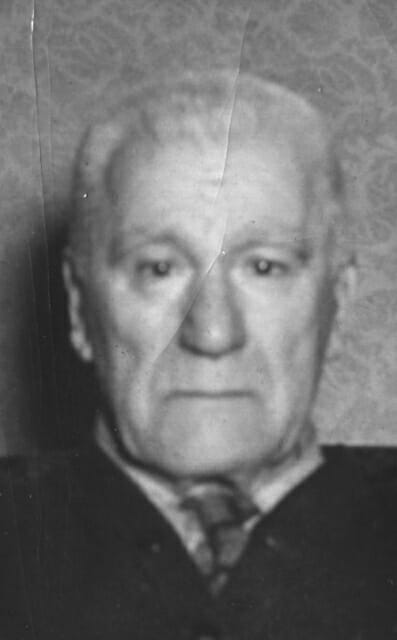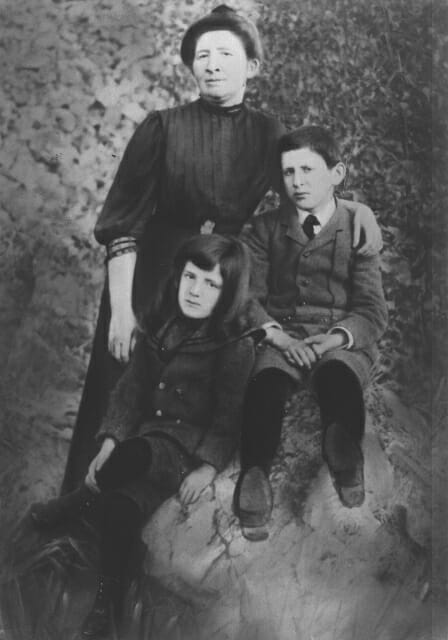Gastineau Channel Memories
Botelho
Bruce Botelho
Manuel Silveira Botelho was born in Portugal and immigrated to the United States some time between 1878 and 1880. The first accounts of Manuel in the United States are reported in the Polk City Directory for Butte, Montana, between 1890 and 1893, where he ran a boarding house. It was in Butte that he met his future wife, Clara Conway. For her part, Clara was born in or near Cleveland, Ohio, of Irish immigrants, John and Clara (Heaton) Conway. At the time she met Manuel, her father was an assistant superintendent for the Anaconda Mining Company in Butte.
Manuel and Clara married in Seattle on December 11, 1893. They remained in Seattle until shortly after their first son, Frank, was born on February 19, 1895. Manuel and Clara spent some time in the north country (variously Juneau, Skagway and Atlin) before ultimately heading to Dawson City and the Gold Rush. They crossed the Chilkoot Pass, and on September 2, 1899, traveled on the SS Clifford Sifton, a river steamer built in 1898 on Lake Bennett, and floated down the Yukon on a scow.
Emmett was born in Dawson City on July 4, 1900, then a thriving city-in fact the largest Canadian city west of Winnipeg at the time, with a population of 40,000. Manuel and Clara worked a variety of occupations, but between 1908 and 1910, they actively engaged in mining activities on Quartz Creek.
In early October, 1913, Clara and son Emmett boarded the SS Whitehorse to Whitehorse, thence on the White Pass and Yukon Railroad to Skagway before making their way to Juneau. Manuel and their older son Frank remained in the Dawson area for most of another year before moving on to Fairbanks where another gold rush was in progress. They reportedly joined Clara and Emmett in Juneau in 1916.
In September 1918, the Canadian Pacific vessel, Princess Sophia struck Vanderbilt Reef north of Juneau during a snow storm. Though rescue boats stood by, the captain refused to transfer passengers immediately, hoping instead for a company vessel from Victoria, B.C. to arrive on the scene. During the second night, a second storm front moved through and the Princess Sophia slid off the reef and sank with all 300 passengers and crew on board. Most of the passengers were residents of the Yukon and friends and acquaintances of the Botelho family. Emmett assisted in the retrieval of bodies.
Emmett?s first recorded employment was as a longshoreman during World War I. Emmett and Frank then contracted with the City of Juneau?s public works department in 1919, spending much of their time carrying fill to construct streets in Juneau?s tidelands. Then Manuel and his sons worked in the Alaska Juneau mine for a period in the early 20?s. Emmett and Frank tried their hand at prospecting on the Taku River at some point in the 1920?s, most likely in 1929. Manuel also worked as a cook for a period for the Bureau of Public Works.
Emmett was an avid baseball player-and later umpire-in a league that reportedly approached semi-pro status. He often spoke of his experiences as a player.
The four member family lived together for the remainder of Manuel?s and Clara?s lives. Clara died in Juneau during an influenza epidemic on May 2, 1929. Manuel died on April 8, 1943. Frank worked a variety of jobs, including a stint as a prison guard at the Juneau jail. He died July 9, 1945.
During the 1930?s Emmett was part owner of the Triangle Inn. In 1938, he tried his hand at elective politics, but lost his bid for the city council as part of a party ticket. A year later he sold his interest in the Triangle. It was during this time he constructed a log house at Tee Harbor.
Shortly thereafter, Emmett joined the Juneau Police Department and briefly ascended to Chief, April 18, 1942, only to resign to join the Alaska Territorial Highway Patrol. He apparently gained the confidence of his superiors. In 1947, W. Leonard Smith, the Territorial Engineer and head of the highway patrol, appointed him to serve as acting head of the force. The following year, under Frank Metcalf, the new Territorial Engineer, ranks were established and Emmett was appointed sergeant. It was in this capacity as highway patrol sergeant that he met Harriet Tieszen.
Harriet, who had been born in Montana and grew up in South Dakota, had come to Juneau in 1947, to work for the territorial Department of Public Welfare. After a short courtship, they were married and made their Tee Harbor cabin into a full time home. She was involved in several civic affairs, including the VFW Auxiliary and BPW. She served on the board of directors of Glacier Highway Electric Association. She was an early advocate of the creation of an independent school district so that pupils in the Tee Harbor area could attend schools in downtown Juneau.
On September 7, 1952, the Princess Kathleen, a tour ship of the Canadian Pacific Line completing its last run of the season, went aground on Lena Point, across from the family home at Tee Harbor. While no lives were lost, the vessel itself sunk into about 20 fathoms of water. Harriet was able to make her way on foot to the point and watched as the bow went under.
Emmett continued in his role as an officer in the highway patrol and was generally regarded as the right hand man of Frank Metcalf, the Territorial Engineer. In 1953, the Legislature replaced the Alaska Highway Patrol with the Alaska Territorial Police, under the direction of a superintendent. The reorganization had an immediate impact on the family. Emmett, who had been promoted to lieutenant under the older organization, was transferred to Anchorage in 1954, to manage troopers in the outlying areas of the Third Judicial District. With statehood, the Territorial Police went through another reorganization. Emmett took over as chief of a new ?service section.? In 1961, he was transferred back to Juneau. Shortly thereafter, he retired from the force. Harriet returned to work as a social worker for the Department of Health and Welfare.
Emmett regularly drove to town in the evenings in order to play his favorite card game, ?pan? at the New York Tavern. In 1978, he suffered a massive stroke that ultimately required him to be cared for full time in the Alaska Pioneer?s Home in Sitka. He died October 22, 1989.
Harriet continued to work as a social worker until 1984. Her retirement allowed her to focus more fully on volunteer activities and her companion pets. She has served as a volunteer for the Gastineau Humane Society, the Juneau Convention and Visitors Bureau and the Juneau-Douglas City Museum. She continues to reside at the family home in Tee Harbor.
Two of Emmett and Harriet?s three children, Bruce and Catherine (along with their respective families) continue to live in the Juneau area. Bruce, who was mayor of Juneau between 1988 and 1991, is currently Alaska?s attorney general. He and his wife, Lupita, have two children, Alejandro and Adriana. Cathy recently retired as a shellfish biologist for the Alaska Department of Fish and Game. She and her husband, John Clark, have two daughters, Lindsay and Auriel. Julie is a homemaker and lives in Boca Raton, Florida, with her husband Henry Talerico and two sons, Andrew and James.
 |
M.S. Botelho. |
 |
Dawson, ca. 1910. Clara with Frank and Emmett. |
